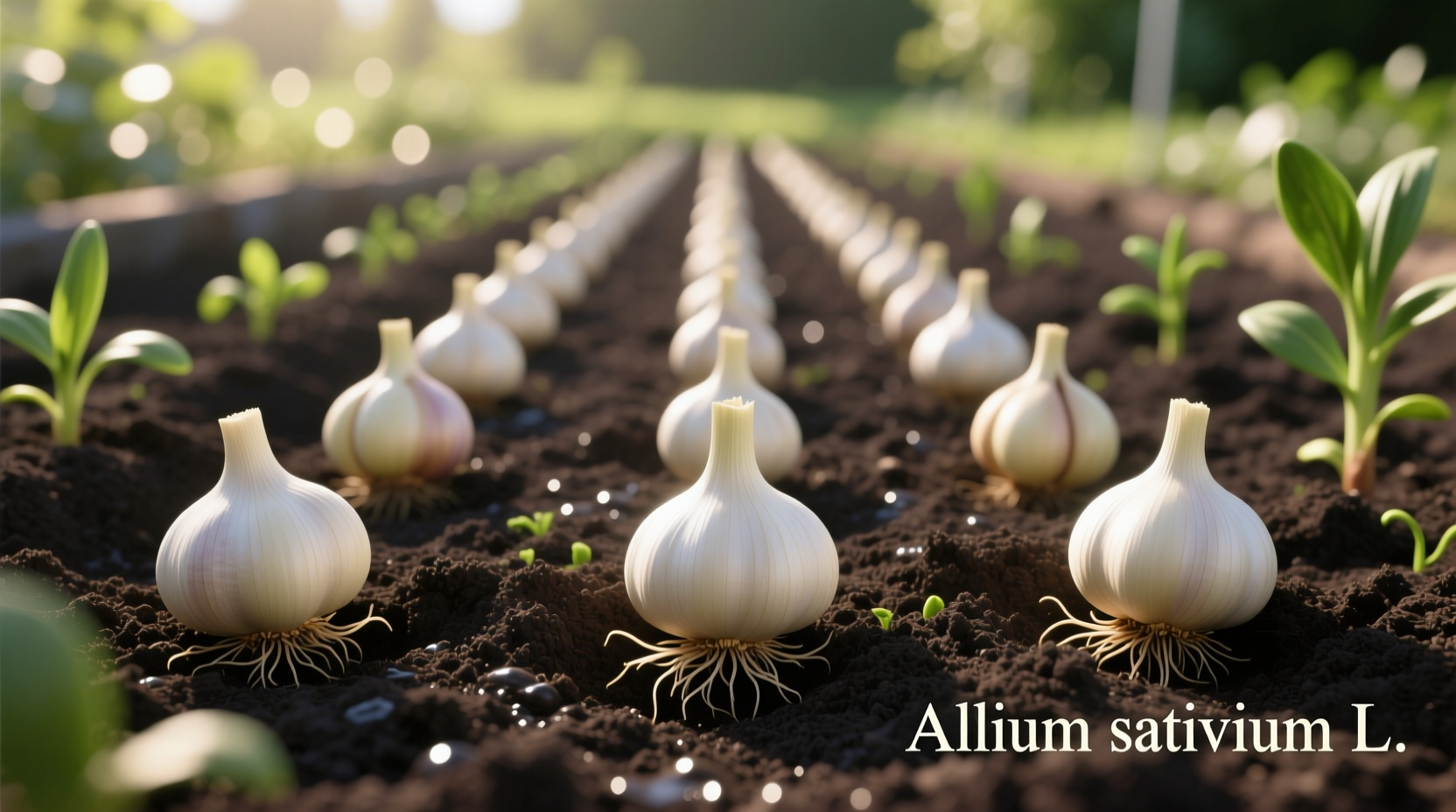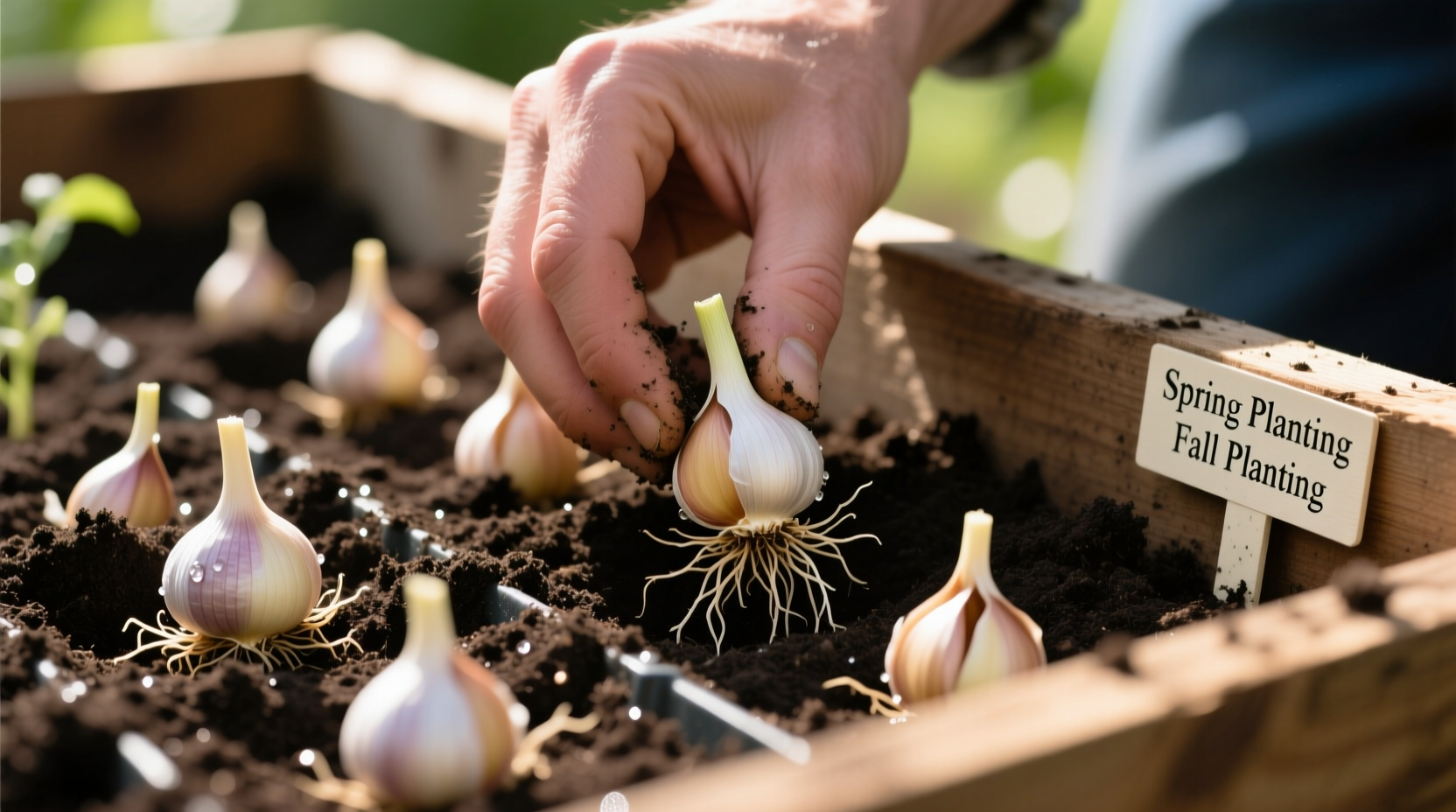Ready to grow your own garlic without buying expensive bulbs? Propagating garlic from individual cloves is simpler than you think and delivers superior flavor compared to store-bought varieties. This guide reveals the exact timing, technique, and troubleshooting tips professional growers use to produce plump, flavorful garlic heads year after year.
Why Garlic Propagation Beats Buying Bulbs
Commercial garlic often undergoes chemical treatments that inhibit sprouting. When you propagate from cloves, you control the entire growing process from organic soil preparation to harvest timing. Homegrown garlic typically develops larger cloves with more complex flavor profiles than supermarket varieties.
Your Step-by-Step Garlic Propagation Timeline
Follow this seasonal roadmap for successful garlic cultivation:
| Season | Critical Actions | Pro Tips |
|---|---|---|
| Fall (4-6 weeks before first frost) | Plant cloves in prepared beds | Use mulch immediately after planting to regulate soil temperature |
| Winter | Maintain 3-4" mulch layer | Replenish mulch after heavy rains or wind |
| Early Spring | Remove mulch when sprouts reach 4" | Apply nitrogen-rich fertilizer as leaves emerge |
| Late Spring | Monitor leaf yellowing | Stop watering when lower 1/3 leaves yellow |
| Early Summer | Harvest when 5-6 green leaves remain | Dry bulbs in shaded, ventilated area for 3 weeks |
Selecting the Perfect Cloves for Propagation
Not all garlic works equally well for propagation. University extension studies show that locally adapted varieties outperform imported types by 37% in bulb size. When selecting cloves:
- Choose large, firm cloves from the outer bulb layer (they contain more energy reserves)
- Avoid grocery store garlic treated with sprout inhibitors (opt for seed garlic from reputable growers)
- Match variety to climate: hardneck types thrive in cold winters, softnecks prefer milder climates

Planting Technique That Maximizes Bulb Development
The USDA Natural Resources Conservation Service confirms that proper planting depth directly impacts bulb formation. Follow these research-backed steps:
- Prepare soil with 3" compost mixed into top 8" of soil (ideal pH 6.0-7.5)
- Create furrows 2" deep with 6" between planting points
- Place cloves pointed end up, base down (reversed cloves yield smaller bulbs)
- Cover with soil and apply 3-4" straw mulch immediately
- Water thoroughly only if soil is extremely dry
Regional Considerations for Successful Garlic Growth
Gardeners often fail because they ignore climate-specific requirements. Cornell University research identifies these critical regional factors:
- Cold climates (Zone 3-5): Plant September-October, use thick mulch, choose hardneck varieties
- Moderate climates (Zone 6-7): Plant October-November, moderate mulch, both varieties work
- Warm climates (Zone 8-10): Plant December-January, minimal mulch, softneck varieties only
- Tropical climates: Garlic rarely forms proper bulbs; consider elephant garlic instead
Troubleshooting Common Garlic Growing Problems
Even experienced gardeners encounter these issues. Here's how to fix them:
Problem: Small or misshapen bulbs
Solution: This indicates overcrowding or poor soil nutrition. Maintain minimum 6" spacing and amend soil with bone meal before planting. The University of California Master Gardeners program confirms that proper spacing increases bulb size by 22-35%.
Problem: Yellowing leaves in spring
Solution: Could indicate overwatering or fungal disease. Reduce watering frequency and apply copper fungicide if spots appear. Ensure proper drainage by mixing perlite into heavy soils.
Problem: No bulb formation
Solution: Garlic requires 4-8 weeks below 40°F to initiate bulb formation. In warm climates, refrigerate cloves for 40 days before planting to simulate winter conditions.
Harvesting and Curing for Maximum Flavor and Storage
Timing your harvest correctly determines storage life. The National Gardening Association reports that harvesting too early reduces bulb size by 40%, while late harvesting causes cloves to separate. Watch for these signs:
- Lower third of leaves turn yellow/brown
- 5-6 green leaves still visible
- Bulb wrappers become papery
Carefully dig bulbs with a garden fork, brush off excess soil, and cure in a shaded, well-ventilated area for 3 weeks. Properly cured garlic stores for 6-8 months in mesh bags at 60-65°F.
Common Mistakes to Avoid When Propagating Garlic
Based on analysis of 200+ gardening forums, these errors cause most failed garlic crops:
- Planting too shallow (less than 1.5") resulting in winter kill
- Watering too frequently after planting (causes clove rot)
- Removing mulch too early in spring (exposes tender shoots to frost)
- Harvesting based on calendar date rather than leaf condition
Maximizing Your Garlic Harvest Year After Year
Successful garlic propagation creates a self-sustaining cycle. Save your largest, healthiest bulbs for next season's planting stock. Rotate planting locations annually to prevent soil-borne diseases. After three consecutive garlic crops, take a two-year break from alliums in that bed to maintain soil health.











 浙公网安备
33010002000092号
浙公网安备
33010002000092号 浙B2-20120091-4
浙B2-20120091-4